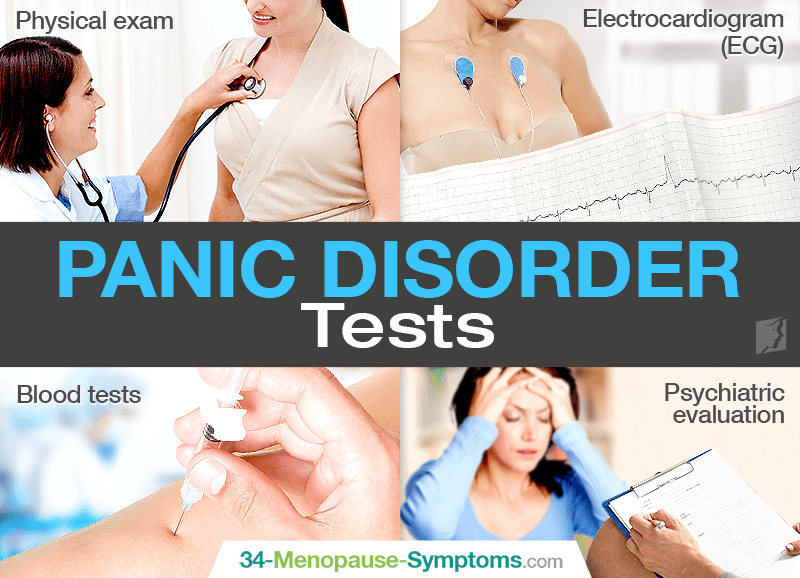Panic attacks often produce severe physical symptoms, such as palpitations or chest pain, which can mimic some serious medical conditions. This resemblance to other illnesses is the reason why panic disorders are so frightening to middle-aged women and difficult to diagnose.
There are no medical tests to diagnose panic attacks. They usually resolve within 10 minutes, before a woman gets to the emergency room or her doctor, so the majority of tests are ordered to rule out physical illnesses, such as hormonal imbalance or thyroid disease. Check out the most common tests used to aid the diagnosis of panic attacks.
Physical Exam
A thorough physical exam, including a detailed medical history, is always the initial step in approaching any medical conditions, including panic disorder. It can help the doctor understand the general status of your health and put the symptoms you experience in a wider perspective.
Electrocardiogram (ECG)
It is a standard medical test, which registers the electrical activity of the heart and detects many abnormalities. It is usually sufficient to rule out a heart attack or often other heart diseases, such as a mitral valve prolapse that might be mistaken for a panic attack.
Blood Tests
They can be ordered if a heart condition is ruled out and other medical conditions are suspected to cause panic attacks. They include:
Complete blood count (CBC) provides general information about the numbers of red and white blood cells, as well as platelets, which can signal an infection, anemia, and other illnesses.
Urea and electrolytes (U&E) is ordered to determine an electrolyte imbalance, such as low sodium (hypernatremia) or calcium (hypocalcaemia) that can produce panic attack symptoms.
Blood glucose is used to diagnose low blood glucose (hypoglycemia) that can trigger some of the symptoms of panic attacks.
Follicle-stimulating hormone (FSH) and luteinizing hormone (LH) blood tests check for hormonal imbalance due to menopause that often triggers panic attacks.
T4, T3, and thyroid-stimulating hormone (TSH) blood test is used to rule out a thyroid disease as the underlying cause of panic attacks.
Psychiatric evaluation
When a heart disease and other medical causes are eliminated, women are referred to a mental health specialist for an evaluation. This typically consists of filling out a questionnaire to assess their mental state and a consultation to discuss the findings.
What to Consider
Similar versions of the self-assessment questionnaires used at the medical facilities are available online through various governmental or educational portals focusing on anxiety and panic disorders. Some women might feel more confident about filling them out in the comfort of their home to get the initial feedback about their mental health status, but it is recommended to research the institutions that offer these quizzes to ensure that they are legitimate and reliable.
Because panic attacks produce many of the classic symptoms of a heart attack, it is safer to treat each panic attack as a potential heart attack and seek a prompt medical attention.
Most women do not realize that a mental health disorder can produce such severe physical symptoms, so many of them believe that they have a physical illness. This fear and uncertainty often triggers subsequent panic attacks, creating a vicious cycle that is hard to break. If you have difficulty managing your panic attacks, you might want to take advantage of some alternative therapies.
Sources
- Anxiety and Depression Association of America. (n.d.). Screening for Panic Disorder. Retrieved September 22, 2017 from https://adaa.org/screening-panic-disorder
- American Family Physician. (1998). Panic Disorder: Diagnosis and Treatment in Primary Care. Retrieved September 18, 2017 from http://www.aafp.org/afp/1998/0515/p2328.html
- Cleveland Clinic. (2017). Panic disorder. Retrieved September 18, 2017 from https://my.clevelandclinic.org/health/articles/panic-disorder
- Women's Health. (2010). Panic disorder. Retrieved September 18, 2017 from https://www.womenshealth.gov/mental-health/illnesses/panic-disorder.html



